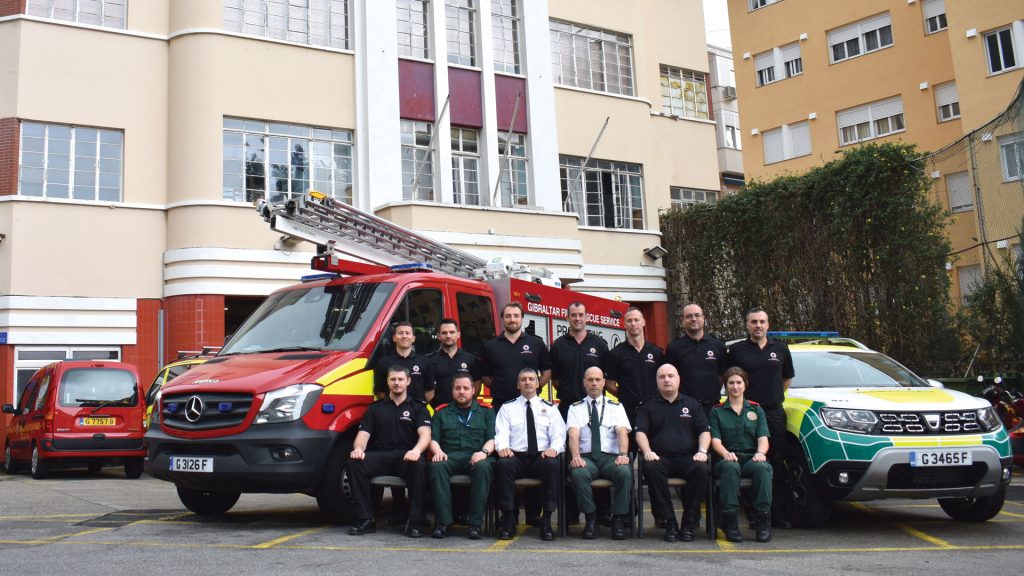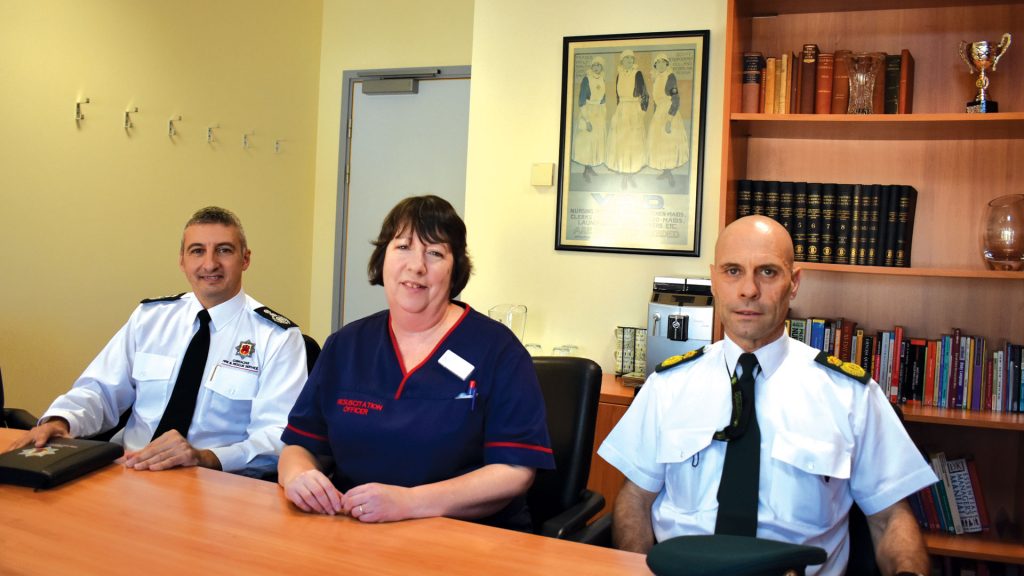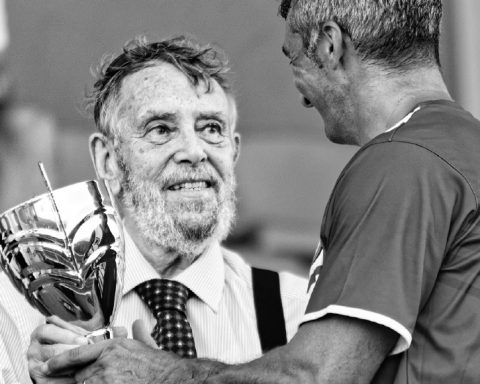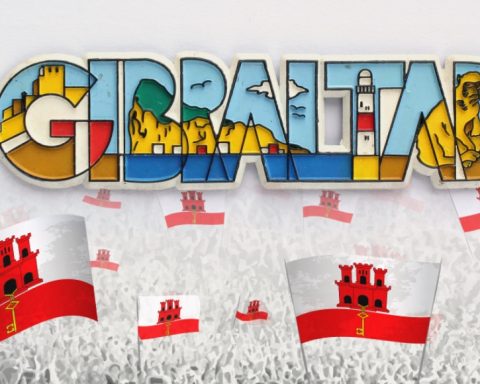‘Help us to help those people you love’
Would you know what to do if someone has a cardiac arrest? Cardiac arrest is reversible in most victims if it’s treated within a few minutes.
Collaboration between Gibraltar Fire & Rescue Service, Gibraltar Ambulance Service and Gibraltar Health Authority saw the launch of the Telephone-CPR service (T-CPR) on the 14th February, Valentine’s Day. Run along the lines of the UK system, this initiative will bring Gibraltar in line with developed countries in Europe. “Telephone-CPR and Bystander CPR is part and parcel of the chain of survival,” states Chief Ambulance Officer, Sigurd Haveland.
Chief Fire Officer, Colin Ramirez explains that calls from anyone ringing 190 or 112 will still be received by the Fire Control operators who will then deploy whatever resources are required in terms of emergency ambulances. “The dispatchers will ask the caller 4 questions to establish if the patient requires resuscitation and if the caller does accept those instructions and is willing to perform those actions, the Controller will then provide instructions on how to give chest compressions until the arrival of the Paramedic Ambulance.”

GHA’s Resuscitation Officer, Tina Reyes-Hughes, explains that an estimated 20 people in Gibraltar will have a cardiac arrest out of hospital this year, either at home, at work or in a public place. A cardiac arrest is when the heart stops beating suddenly and without warning. “Because these people are not likely to be in hospital, it is the public, friends, relatives and strangers that are in the best position to make a difference by starting CPR quickly and before the ambulance arrives,” she says. Tina is keen to stress that the quality of survival from a cardiac arrest is increased hugely by having somebody administering CPR almost as soon as they collapse. “We know that people survive because of it, but we also know that they survive better in terms of neurological outcomes – how their brain functions – so it is about the quality of survival as well as the fact that they do survive.”
“The initiative for the project came from Sigurd in 2017 who together with Tina were the instigators of all this,” Colin states. “We started discussions with the Gibraltar Fire and Rescue Service on how to implement it safely which required training and for policies and procedures to be put in place,” Sigurd tells me, going on to say that It also required an appetite from the Government to launch such a system in Gibraltar, and it was in September last year when everything started to materialise. “The endorsement by the Government was priceless.”
“It has been a show of cooperation between the services for the ultimate beneficiary, the community, and it is very important that Sigurd and Tina implemented that selfless effort to make it happen, and the GFRS want to thank them for their support,” Colin states.

Sigurd explains that the system in place is bespoke to Gibraltar. “We looked at various other algorithms around the world which have been used to implement CPR for years now and there are two aspects here – one is that they use digital systems and we still use a dedicated manual system – so that made us bespoke the algorithms to Gibraltar and secondly, luckily enough we had an appetite from the call handlers and dispatchers, so it was custom-made by all of us – the call handlers and the GHA – for Gibraltar, and there is no algorithm outside Gibraltar that looks like ours.”
Tina outlines the training process: “We started off by producing an algorithm for the call handlers to take the calls down – asking some very basic questions such as “is the patient unresponsive?’, “can you wake the patient up?”, “is the patient breathing?” and then another set of simple instructions including “don’t hang up”, “put your phone on loudspeaker” and “we need you to listen carefully”.
“We got all the nine call handlers in dispatches into two batches and spent four hours making sure that their basic life support was perfect and then got them to use the algorithms in order to instruct their colleagues outside the room on how to do CPR. So they did it themselves, then they told somebody else how to do it, and then they told somebody else how to do it without being in the same room, which is of course what is going to happen in real life.”
Initially, fire operators were trained to handle fire calls, then took on the responsibility of dispatching emergency ambulances and they are now responsible for the delivery of T-CPR instructions. Colin says that it was crucial to keep the process as simple as possible to ensure that the life of the person does not deteriorate as a result of the instructions that they are giving over the phone. It is difficult in a small community, where everybody knows everybody else, whether you are a paramedic, a nurse in A&E, a Resus Officer or the Fire Control officer, because you are going to see somebody at some stage who has been involved in the resuscitation procedure. “Sigurd and Tina have struck the right balance to give the call handlers the confidence that what they are doing is the right thing,” Colin comments. “They see the value because none of us can really understand what it is like to be on the phone,” Tina says.
Get Involved

Both Tina and Sigurd say that they are asking the community for their help to learn and give CPR. Every minute without CPR and defibrillation reduces someone’s chance of survival by up to 10%. “People should find out how to do CPR and that will always be better than hearing how to do it for the first time when faced with a non-breathing, non-responsive casualty,” Tina emphasises.
Sigurd highlights that this is a three-strand project. “Telephone CPR first of all, then Public Assisted Defibrillators and very soon we will be implementing Children’s CPR at school.” The curriculum has already been reformed to allow for Children’s CPR and it is hoped that in a couple of months they will be able to start training teachers.
As an aid to the instructions delivered by the call-handler, you can use the beat of some popular songs such as Staying Alive, Yellow Submarine, Happy Birthday, Match of the Day or Nellie the Elephant to help you perform CPR. Tina says that as long as you are doing 100-120 chest compressions in a minute you can use any song you like. “Preferably not out loud,” she adds. “There are a range of useful learning tools available online, including metronome apps that you can download to your smartphone, or go to the Resuscitation Council website where you can find some useful videos that you can interact with as you perform CPR.”
T-CPR and Bystander Assisted CPR saves lives.







